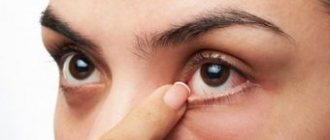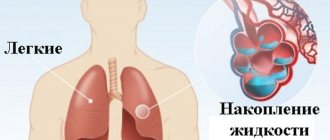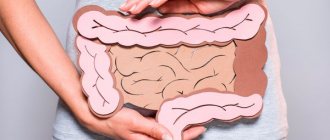General information
Skin itching is one of the interdisciplinary problems that are relevant both for dermatovenerology and allergology, endocrinology, infectology, and oncology.
Some forms of itching (anal itching, scrotal itching, vulvar itching) are considered in ICD-10 as independent nosologies. Itchy conditions are more often diagnosed in women. Frequent background factors are low socioeconomic status, depressive states, constant stress, periods of hormonal changes (pregnancy, menopause). Depending on the course, skin itching can be acute (sudden, short-term) and chronic (long-term, debilitating), according to the area of the itchy surface - localized (local) and generalized (diffuse). According to the mechanism of occurrence, skin itching is divided into:
- pruritoceptive (due to skin diseases);
- systemic (due to general diseases);
- psychogenic (due to mental disorders);
- neurogenic (due to damage to the nervous system).
When to see a doctor
You should consult a dermatovenerologist if skin itching and peeling do not go away for a long time (more than two weeks), contribute to sleep disturbances and decreased performance during the day, spread throughout the body, and are combined with other pathological symptoms. These symptoms in combination with an inflammatory or infectious process require urgent contact with a specialist.
Itchy skin, as well as flaking of the skin, can indicate a serious illness, the absence of treatment of which will lead to serious complications. Experienced doctors at the SANMEDEXPERT clinic will conduct a comprehensive diagnosis and prescribe adequate therapy for the identified pathology in order to eliminate unpleasant symptoms and their cause.
Causes of itchy skin
Itching of the scalp
Caused by diseases of the hair and scalp. It is accompanied by a feeling of skin tightness, scaly desquamation of the epidermis (dandruff), increased oiliness of the hair, excess sebum production, fragility, and sometimes hair loss. Itchy scalp can be caused by incorrectly selected care and styling products (shampoo, conditioner, hairspray). The most common pathological causes of itchy scalp include:
- pathology of the sebaceous glands: dandruff, seborrhea (oily, dry, mixed);
- parasitic diseases: head lice, demodicosis, flea bites, bedbugs;
- mycoses: favus, trichophytosis, microsporia;
- hair shaft abnormalities: idiopathic trichoclasia, knotty hair;
- autoimmune pathologies: psoriasis, SLE, scleroderma;
- other dermatoses: pityriasis versicolor pilaris (Devergie's disease), allergic dermatitis of the scalp;
- general diseases: hypovitaminosis A, heavy metal intoxication, hypothyroidism.
Itchy skin
Body itching
The causes of skin itching can be dermatological and systemic diseases. In some cases, body itching is caused by simple lack of personal hygiene: rarely taking a bath or shower, wearing dirty clothes. On the other hand, itchy skin can occur with infectious and parasitic dermatoses that are contagious to others. Itchy dermatoses are often found in older people (senile itching) and pregnant women. Dermatological diseases that most often cause itchy skin include:
- inflammatory lesions: prickly heat, seborrheic dermatitis, eczema, lichen planus, acne;
- skin infections: herpes, pyoderma, folliculitis, dermatophytosis;
- acariases and entomosis: scabies, demodicosis, pediculosis, insect allergy;
- chronic autoimmune dermatoses: psoriasis, dermatomyositis, Dühring's dermatitis herpetiformis, pemphigoid, pemphigus vulgaris;
- allergic dermatoses: urticaria, prurigo, allergic contact dermatitis, neurodermatitis;
- genodermatoses: ichthyosis, Darier's disease, Haley-Hailey disease;
- skin tumors: leukemides, Sezary syndrome, mycosis fungoides and other T-cell lymphomas of the skin.
Itching of the whole body can be a side effect of taking certain drugs: ACE inhibitors, anti-gout, antiarrhythmics, hormonal drugs, opioids. Systemic diseases occurring with chronic skin itching:
- endocrinopathies: diabetes, hypothyroidism, thyrotoxicosis;
- diseases of the hepatobiliary system and kidneys: cholestasis, cirrhosis of the liver, chronic hepatitis, chronic renal failure;
- infections: HIV, helminthiasis;
- hematological diseases: mastocytosis, leukemia, polycythemia, myeloma, lymphogranulomatosis;
- mental disorders: OCD, depression, dermatozoal delirium.
Itching in the eye area
My eyelids can itch due to any of the listed skin, infectious and general somatic pathologies. However, more often the causes of itching in the eyes are ophthalmological diseases and visual strain. People who use contact lenses, work in contact with dust and chemicals without proper eye protection, and patients with allergies and immunodeficiencies are at risk of developing such a problem. Causes of itchy eyes:
- injuries: foreign bodies, burns, mechanical damage;
- inflammatory diseases: blepharitis, conjunctivitis, meibomitis, barley, keratitis;
- parasitic lesions: demodicosis, dirofilariasis;
- allergies: eyelid dermatitis, hay fever;
- other eye diseases: dry eye syndrome, computer vision syndrome, glaucoma, cataracts.
Cetirizine
Cetirizine inhibits the histamine-mediated early phase of the allergic reaction, prevents various physiological and pathophysiological effects of histamine, such as dilation and increased capillary permeability (development of edema, urticaria, redness), stimulation of sensory nerve endings (itching, pain) and contraction of smooth muscles of the respiratory and gastrointestinal tract. intestinal tract.
In the late stage of an allergic reaction, cetirizine not only inhibits the release of histamine, but also the migration of eosinophils and other cells, thereby attenuating the late allergic reaction. Reduces the expression of adhesion molecules, such as intercellular adhesion molecule-1 (ICAM-1) and vascular cellular adhesion molecule-1 (VCAM-1), which are markers allergic inflammation.
In addition, unlike other drugs used for skin manifestations of allergies, cetirizine not only blocks H1-histamine receptors, but also suppresses the skin response to platelet-activating factor [6, 7]. This is confirmed by the results of numerous clinical comparative studies: the ability to accumulate in the skin allows the drug to relieve itching and hyperemia more effectively than drugs such as ebastine, epinastine, terfenadine, fexofenadine and loratadine [8-10].
Cetirizine has a low volume of distribution compared to other antihistamines - 0.5 l/kg. This provides higher concentrations of the substance in the extracellular space, where H1-histamine receptors are located. This ensures their full employment and the highest antihistamine effect [11]. Another feature of the drug is its high ability to penetrate the skin. 24 hours after taking a single dose of cetirizine, the concentration in the skin is equal to or even slightly higher than the concentration in the blood. The advantage of cetirizine is its steroid-sparing effect: with the simultaneous administration of cetirizine and inhaled glucocorticosteroids in patients with bronchial asthma, the dose of the latter can be reduced or not increased, despite contact with the allergen.
Among cetirizines, Cetrin occupies a special place. In the study by E.E. Nekrasova et al. in patients with chronic urticaria, Cetrin showed the highest effectiveness among other generic cetirizine and the best results in terms of pharmacoeconomics [12].
Diagnostics
Since skin itching is caused by a variety of reasons, specialists from various medical fields are involved in identifying them: dermatologists, parasitologists, trichologists, allergists-immunologists, ophthalmologists, endocrinologists. The nature of the itching can be assumed based on the collected history, localization, and the presence of skin elements (vesicles, papules, pustules, scales, excoriations, crusts). Taking into account the suspected etiology, the examination may include:
- Examination of the skin and scalp.
It is carried out using a Wood's lamp, dermatoscope, trichoscope. Allows you to conduct a visual assessment of skin elements, hair condition, and identify the presence of parasites. Scales and questionnaires are used to measure the severity of itching. - Laboratory diagnostics.
If a systemic nature of skin itching is suspected, the level of thyroid hormones, glucose, liver enzymes, urea and creatinine in the blood is determined. They perform microscopy of skin scrapings, stool analysis for helminth eggs, and spectral analysis of hair for the content of vitamins and heavy metals. Markers of viral hepatitis and HIV infection are studied. - Ophthalmological diagnostics.
A basic examination includes biomicroscopy of the eye, fundus examination, and tonometry. An instillation test with fluorescein is used as an additional method. - Allergy diagnostics.
The main methods for identifying allergies are blood tests (individual allergens, histamine, total IgE) and skin allergy tests for atopy antigens (prick test, prick tests). - Other examinations.
To exclude damage to internal organs as the cause of skin itching, an ultrasound of the hepatobiliary system and kidneys is performed. In unclear cases, a skin biopsy is required.
Examination by a dermatologist
Treatment
Treatment for itchy skin
Therapy for skin itching is carried out taking into account the established causes and associated factors. For this purpose, pharmacotherapy, local therapy, physiotherapy, and psychotherapy are used. Patients with itchy skin need to change their eating and daily household habits: giving up sweet foods, wearing clothes made of synthetic and coarse fabrics, and using detergents that dry out the skin. It is recommended to avoid stress, avoid scratching the skin, and use neutral moisturizers.
Direct treatment for itchy skin consists of the following components:
- Topical therapy.
Among local antipruritic drugs, topical steroids, cooling lotions, local anesthetics, antihistamines, and calcineurin inhibitors are recommended. The drugs are available in the form of creams, solutions, powders, and ointments. - Systemic pharmacotherapy.
Taking into account the etiological factor of skin itching, antihistamines, glucocorticosteroids, vitamins, immunosuppressants, antimicrobials, and in some cases antidepressants and opioid analgesics are prescribed. - Physiotherapy.
Among the methods of physiotherapy for various forms of skin itching, PUVA therapy and PUVA baths, ultraviolet irradiation, laser therapy, ultraphonophoresis, electrosleep, etc. can be effective. Exercise therapy, acupuncture, general baths with a sedative effect (pearl, pine, valerian) are useful. - Psychotherapy.
Psychotherapeutic techniques (autogenic training, group psychotherapy, cognitive behavioral therapy) help reduce the subjective perception of the severity of itching, stop scratching the skin, improve sleep and quality of life.
Treatment for itchy scalp
The problem of itchy scalp often resolves when the underlying disease goes into remission. In all cases, the selection of pharmaceutical cosmeceutical hair care products is important: shampoos, masks, oils. For complex treatment of the identified problem, a trichologist may suggest mesotherapy, cryomassage, darsonvalization, and laser treatment of the scalp. For dandruff and seborrheic dermatitis, use antifungal shampoos. For pediculosis, the scalp is treated with special products.
Treatment for itchy eyes
Treatment of itching in the eye area has its own specifics and is carried out mainly using local remedies. During treatment, you must stop using cosmetics and wearing contact lenses in favor of glasses. To eliminate the causes of itching, the following are prescribed:
- instillation of eye drops: antihistamines, steroids, antibacterials, “artificial tears” preparations;
- placing ointments behind the eyelid;
- shading of the conjunctiva with antiseptic and astringent agents (for conjunctivitis);
- treatment of the ciliary edge of the eyelids (for demodicosis, blepharitis);
- washing the conjunctival sac (for eye burns, foreign bodies);
- physiotherapy: UHF, magnetic therapy, magnetophoresis, laser therapy.
If necessary, surgical interventions are performed: opening the stye of the eyelid, removing foreign bodies of the conjunctiva and cornea, anti-glaucoma operations, phacoemulsification of cataracts, etc.
Pathophysiology
Signals for pain and itching caused by skin causes are transmitted along the same pathways, but the afferent C-fibers differ functionally: one part of the nerve fibers is stimulated by histamine, the other by other substances that cause itching (for example, serotonin). There is evidence of similarities between neuropathic pain, itch and cough. Their common property is peripheral and central sensitization of the afferent nervous system. This explains the effectiveness of antiepileptic drugs and antidepressants for such a variety of conditions, as well as the ineffectiveness or low effectiveness of H1 blockers for some types of itch.
Mechanisms and mediators involved in the formation of the sensation of itching:
- amines (histamine, serotonin, acetylcholine);
- proteases and kinins (tryptase, chymase, kallikrein, bradykini, etc.);
- neuropeptides (substance P, neurotensin, etc.);
- cytokines (prostaglandin E reduces the threshold for susceptibility to itching);
- opioid receptors (metenkephalin, leuenkephalin, β-endorphin), naloxone reduces itching, opiates relieve pain but increase itching.









